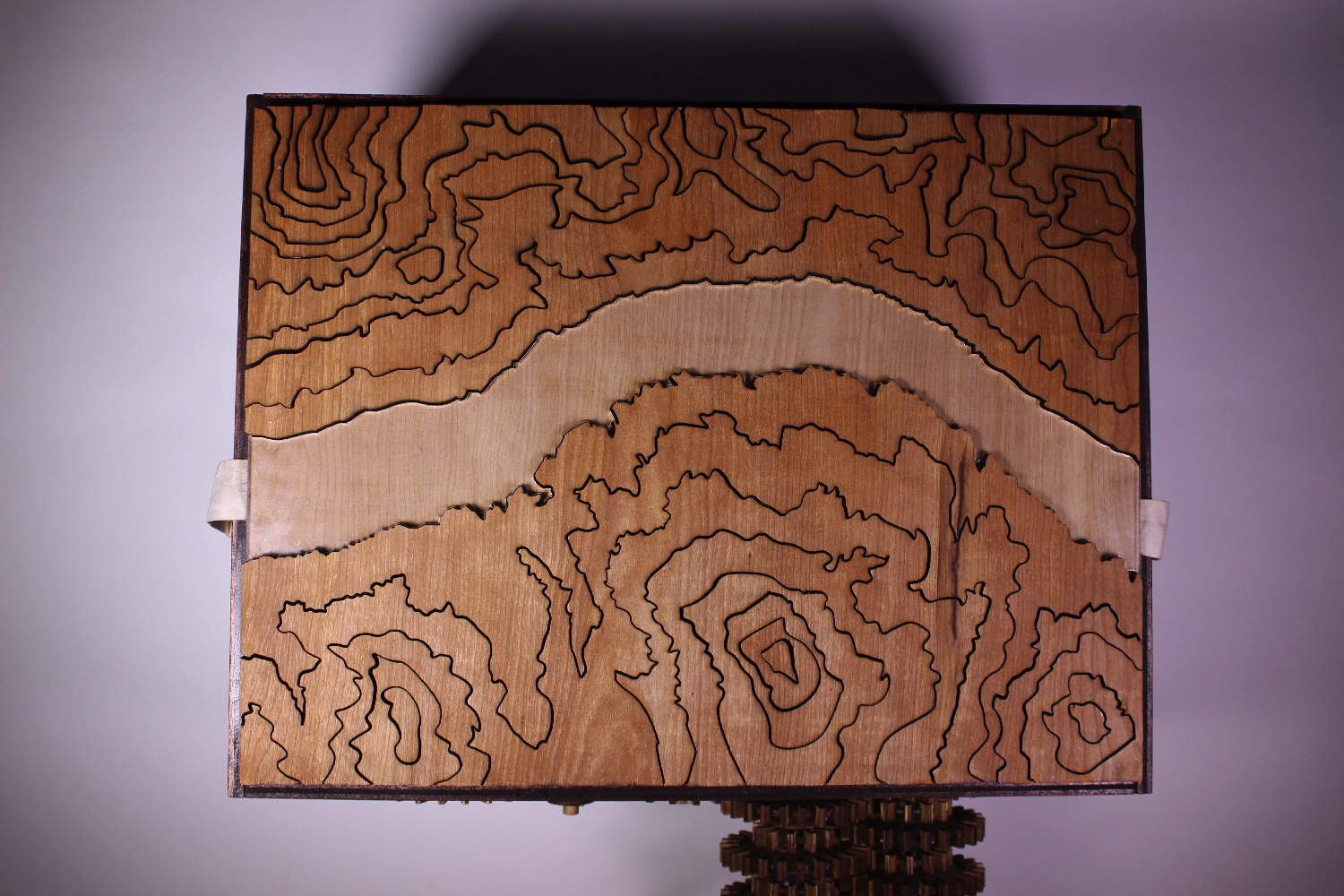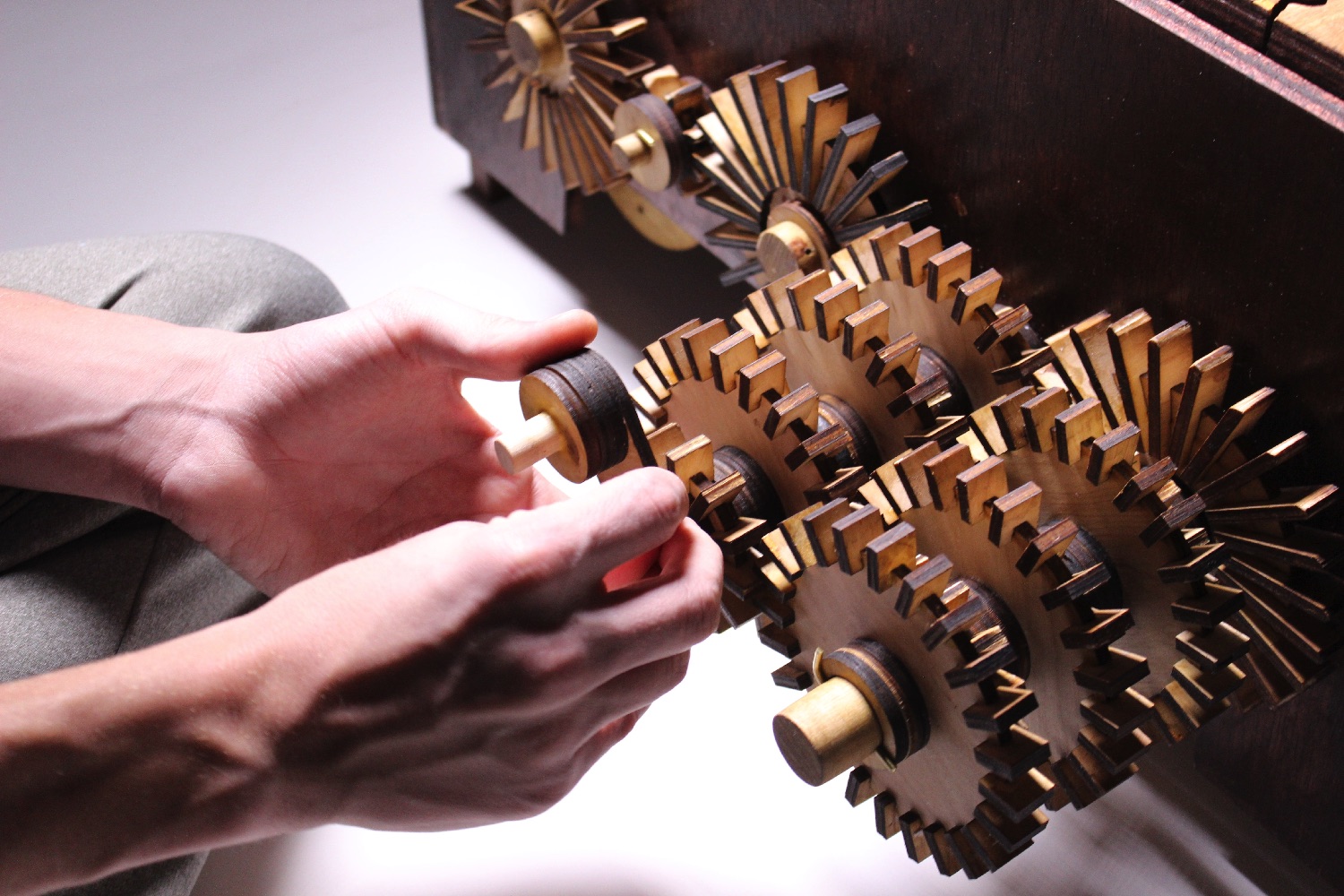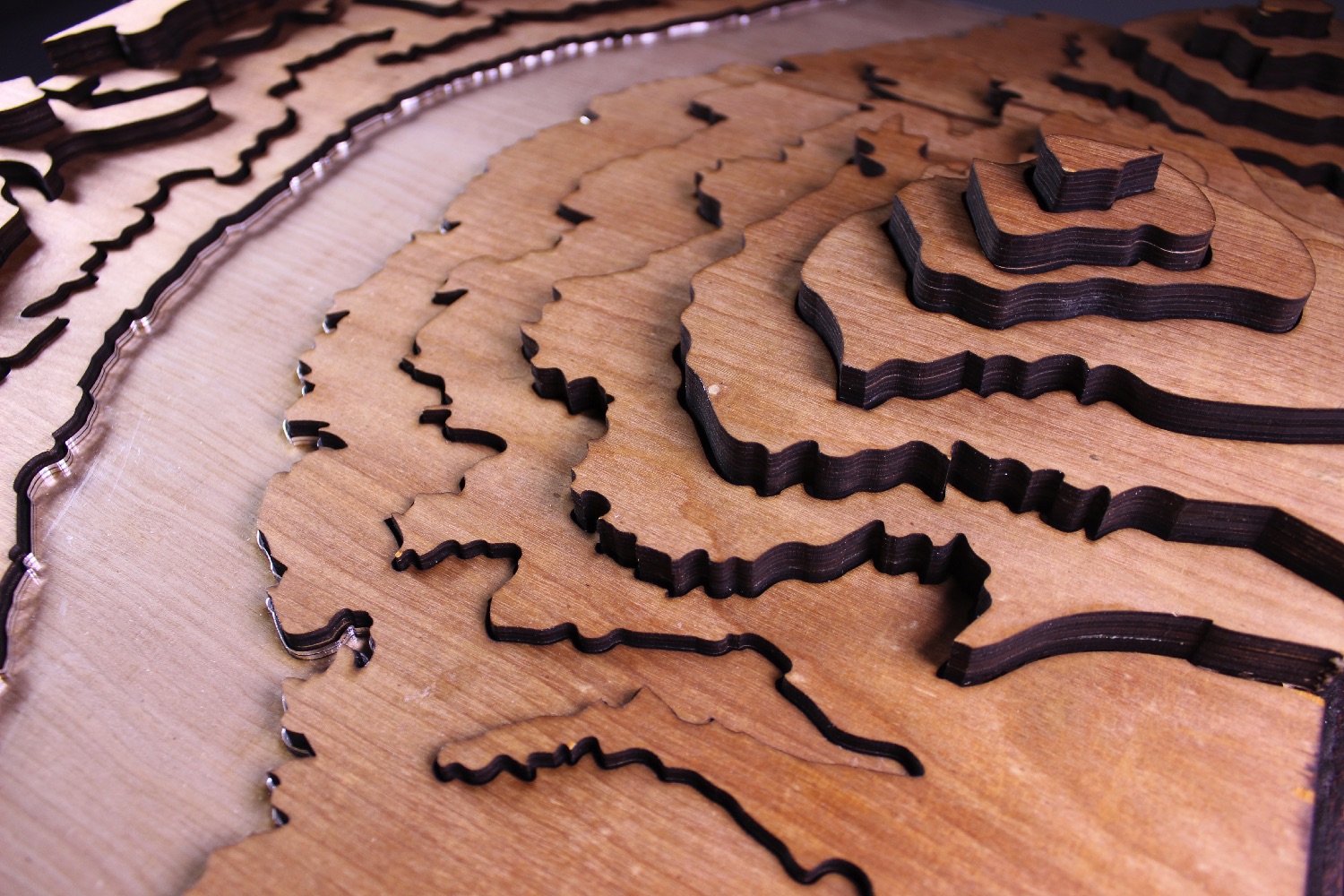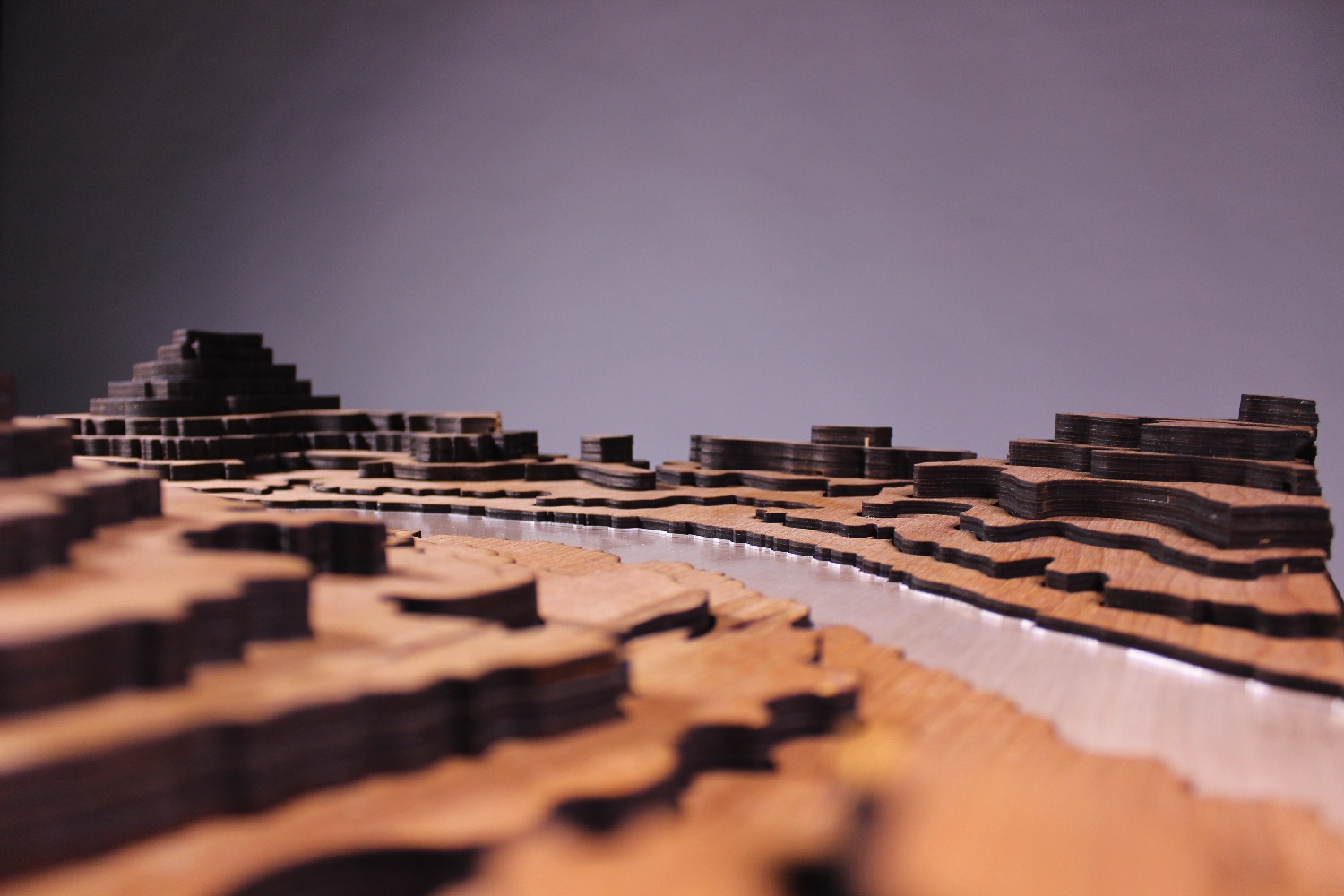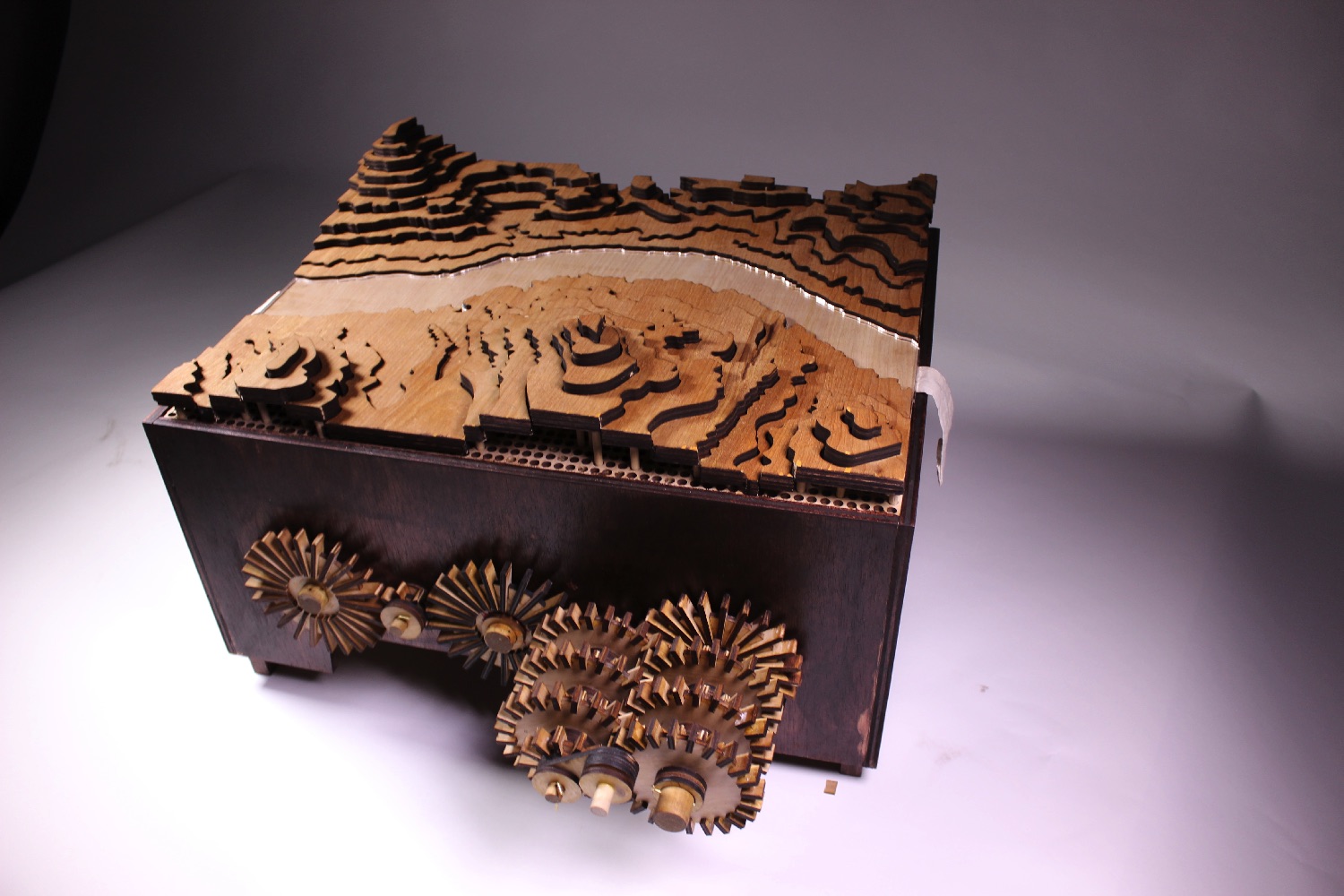Well, three industrial design students from Philadelphia University — Charles Barilo, Peter Holderith and Zachary Samalonis — have just brought a similar idea to life with a hand-cranked machine that causes a topographical map to emerge from a flat surface when its handle is turned.
“The inspiration was the painting ‘Grand Canyon of the Colorado River,’ by Thomas Moran,” Barilo, 19, one of the freshmen involved with the project, told Digital Trends. “The portion of the map you see rising is an actual bend in the Colorado River. The thought of being able to create a moving topographical map seemed very appealing to the three of us and our professors.”
The piece was created for the final project of the trio’s first semester. It answered a design brief called “exploration through motion” that has been run by the department for more than a decade, and is always a favorite of the class.
The team started by visiting the Philadelphia Museum of Art to pick a painting to base their machine around. After developing the idea of bringing the topography to life, they then designed a concept in Adobe Illustrator, before getting to work with a CNC router and laser cutter to create the different complex pieces.
“Assembly for the device took four or five days, in which we made necessary adjustments to make sure the gears meshed correctly, and ensure the entire machine flowed seamlessly,” Barilo continued. “Throughout the whole process we took, videos and documented it to create a process video so people could see how it all came together.”
In something of a rare move, though, the three aren’t taking their much-admired design down the crowdfunding route now that it’s finished — which means you’ll have to shelve those dreams of having it as the stylish centerpiece in your apartment. For now, at least.
“While we don’t have any current plans to sell the machine, or build more to sell, we still have all of the Illustrator files and CAD files if we ever decided to create another machine of this sort,” Barilo said. “The current machine takes a lot of tinkering to get it to work seamlessly, and a lot of time to construct, but if we could make something similar that could be reproduced and also provide the feeling that we felt when it rose from its base in front of our entire design department on the day of the presentation, that would be pretty amazing. Unfortunately, with all three of us still being full-time students, and having professors to please, these plans probably won’t come to fruition in the near future.”
That doesn’t stop it from being an awesome piece of work, however. Something tells us we haven’t heard the last of these three talented creators.
